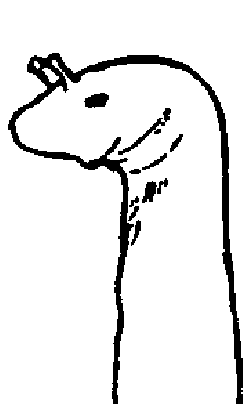 |
Science Frontiers ONLINE No. 55: Jan-Feb 1988 |
|
|
The Ubiquity Of Sea Serpents
Public interest is usually focussed (by the media) upon the supposed monsters in Loch Ness, Lake Champlain, the Chesapeake Bay, etc. Actually, an immense body of sea serpent reports also exists. B. Heuvelmans collected many of these in his 1965 classic In the Wake of the Sea-Serpents.
P.H. LeBlond, a professor at the University of British Columbia, is extending Heuvelman's work, concentrating on the thousand miles of Pacific Coast between Alaska and Oregon. Since 1812, there have been 53 sightings of sea serpents or other unidentified animals along this narrow strip of ocean. Some of these are very impressive. Take this one for example:
"In January 1984 a mechanical engineer named J.N. Thompson from Bellingham, Washington, was fishing for Chinook salmon from his kayak on the Spanish Banks about three-quarters of a mile off Vancouver, British Columbia, when an animal surface between 100 and 200 feet away. It appeared to be about 18-20 feet long and about two feet wide, with a 'whitish-tan throat and lower front' body. It had stubby horns like those of a giraffe, large ('twelve to fifteen inches long') floppy ears, and a 'somewhat pointed black snout.' The creature appeared to Thompson to be 'uniquely streamlined for aquatic life,' and to swim 'very efficiently and primarily by up and down rather than sideways wriggling motion...'"
LeBlond and biologist J. Sibert have analyzed all of the 53 sightings in a 68page report entitled "Observations of Large Unidentified Marine Mammals in British Columbia and Adjacent Waters," published by the University of British Columbia's Institute of Oceanography. Of the 53 sightings, 23 "could not definately or even speculatively be accounted for by animals known to science." The authors of the report emphasize that the reports are of high quality, made by people knowledgeable about the sea and its denizens.
(Gordon, David G.; "What Is That?" Oceans, 20:44, August 1987.)
 | Heuvelman's rendition of the "long-necked sea-serpent" also shows giraffe-like horns. |